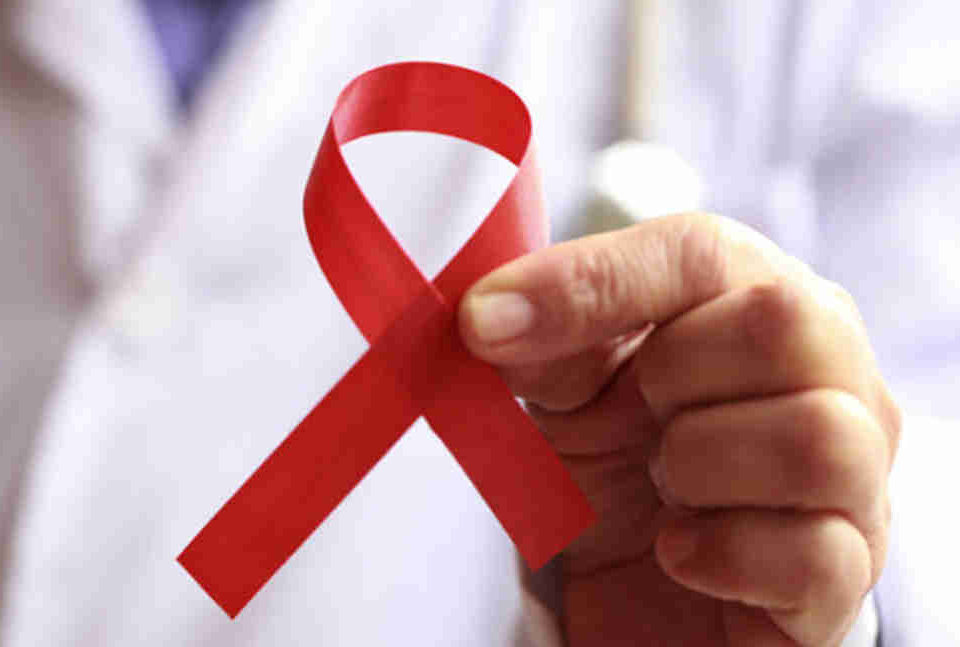- 如有疑问,请联系电邮
- customer@ihealth66.com
USNEWS:关于胰腺癌我应该知道什么?
By David Levine
对于很多各类的癌症,患者往往可以与这种疾病一起生活数年,以至于它被认为是一种慢性疾病,就象糖尿病或哮喘一样。根据美国癌症协会(American Cancer Society)的研究,某些类型的卵巢癌、慢性白血病、一些淋巴瘤,甚至一些已经扩散或在身体其他部位复发的癌症,如转移性乳腺癌或前列腺癌,也会成为慢性癌症。遗憾的是,胰腺癌并非如此。
2010年,胰腺癌的五年生存率只有6%,胰腺癌行动网络的临床行动副主任Cassadie Moravek说。2017年,这一数字仅增长到9%。“这是渐进的进展,迫切需要取得更多进展,”莫拉维克说。然而,她说,这一微小的进步确实意味着,与10年前相比,今天有更多的胰腺癌患者活得更长。
随着研究和临床试验发现新的、更好的治疗方法来减缓胰腺癌,延长胰腺癌患者的寿命,进展还在继续。Moravek说:“我们在2011年设定了一个目标,到2020年将存活率提高一倍,并通过研究、临床行动、患者服务和宣传来改善胰腺癌患者的预后。”
Moravek说,自1999年以来,三期临床试验的总体生存中值增加了近100%,表明这些试验确实找到了有效的治疗方法。“临床试验的进展为胰腺癌患者提供了更多的治疗选择。随着治疗方法的改进,患者能够体验到对疾病的控制,通过减少疾病负担带来的症状,他们可以活得更长,生活质量更高,”她说。
但帮助病人活得更长并不是唯一的问题。她补充说:“我们还注重在临床试验和临床实践中改进支持性护理措施,以确保患者不仅活得更长,而且生活质量也更高。”支持性护理对于提高胰腺癌患者的生活质量变得非常重要,包括疼痛管理和控制消化问题以及该疾病的其他症状或治疗的副作用。
和胰腺癌专家谈谈
胰腺癌患者能做的最重要的选择就是“去一个能看到很多像他们这样的病人的中心。”这是一种很难做出治疗决定的疾病,你需要一个有着丰富经验的团队来做出这些决定,”布莱恩·沃尔平博士解释道,他是达纳-法伯癌症研究所黑尔胰腺癌研究中心主任,也是哈佛医学院的医学副教授。
这对那些癌症尚未扩散的人来说尤其如此。沃尔平说,大约有一半的确诊病例是癌症。他说:“在这些情况下,要做出许多关于化疗、放疗和手术的复杂决定。”还有许多临床试验正在进行中,试图找到治疗胰腺癌的新方法。他表示:“在有相关经验的地方学习,并进行相关研究,可能会有帮助。”“取得进展的唯一途径是找到治疗癌症的新药物和新方法。但我们在让人们帮助测试新疗法方面做得不是很好。”
选择胰腺癌中心的另一个原因是,无论何时,只要有可能,就可以找到许多专家来处理癌症带来的生理和心理需求。沃尔平说:“作为肿瘤学家,我们谈论对现有治疗方法的合理期望,通常会有一组人提供帮助——社会工作者、营养学家、精神病学家和心理学家,还有一大批护士帮助患者了解诊断结果。”“对其他癌症也是如此,但对胰腺癌来说,这确实是一种团队合作的方法,因为患者的治疗方式各不相同。”
患者如何才能继续享受生活
沃尔平说,对于许多预后不良的患者来说,他们的目标是“在剩下的时间里,尽量让自己感觉良好。”近年来,姑息疗法有所改善,现在有针对无法治愈的癌症的化疗方案。“患者的情况明显好转,寿命延长,化疗减少肿瘤的发生也更加频繁。他说,因为较小的肿瘤可以帮助减轻疼痛、疲劳、食欲不振和癌症的其他症状。
除了化疗,还有很多治疗方法可以治疗疼痛、恶心和其他症状。这种癌症会导致胰腺功能不全,导致严重的消化问题。但是病人可以服用酶来帮助更好地消化食物。与营养师或注册营养师交谈还可以帮助患者制定符合胰腺癌特殊消化需求的饮食计划。替代医学疗法,包括灵气按摩、瑜伽和针灸,也能给许多病人带来减轻疼痛和心灵平静等好处。
对胰腺癌患者的情感支持是至关重要的,尤其是考虑到生存数据。Moravek说,胰腺癌行动网络的患者中心合作伙伴可以提供“患者认为有助于保持积极态度的资源,包括通过我们的幸存者和护理人员网络与其他患者联系,在他们所在地区寻找在线支持小组或当面支持小组”。来自家人和朋友的支持也是保持积极态度的一个非常重要的部分。”
精神卫生保健是另一个不容忽视的方面,因为没有令人惊讶的证据表明,胰腺癌诊断后会出现焦虑和抑郁。Moravek补充说:“患者与他们的医疗团队讨论抑郁和焦虑的症状,并寻求心理健康护理的推荐,这是至关重要的。”
尽管胰腺癌的预后常常令人沮丧,但沃尔平说:“我们鼓励人们在经历这段时期享受生活。”“我们的目标不是一直呆在家里。目标是让他们做他们想做的事情。我们花了很多时间思考如何做到这一点。”
WITH MANY FORMS OF cancer, patients can often live for years with the disease, to the point that it is considered a chronic condition, like diabetes or asthma. According to the American Cancer Society, certain types of ovarian cancer, chronic leukemia, some lymphomas and even some cancers that have spread or have come back in other parts of the body, like metastatic breast or prostate cancer, also become chronic cancers. Sadly, that is not the case with pancreatic cancer.
In 2010, the five-year survival rate for pancreatic cancer was just 6 percent, says Cassadie Moravek, associate director of clinical initiatives for the Pancreatic Cancer Action Network. In 2017, it had increased only to 9 percent. “This is incremental progress, and the need for more progress is urgent,” Moravek says. However, that small bit of progress does mean that more people today are living longer with pancreatic cancer than they did 10 years ago, she says.
And progress continues, as research and clinical trials find new and better treatments to slow pancreatic cancer and prolong life for those with the disease. “We set a goal in 2011 to double survival by 2020,” Moravek says, and “to improve outcomes for pancreatic cancer patients through research, clinical initiatives, patient services and advocacy.”
Moravek says that there has been a nearly 100 percent increase in median overall survival from phase III clinical trials since 1999, showing that these trials are indeed finding therapies that work. “Progress made in clinical trials has provided more treatment options for pancreatic cancer patients. With improved treatments, patients have been able to experience control of their disease, allowing them to live longer and have a better quality of life by having fewer symptoms from a reduced burden of their disease,” she says.
But helping patients live longer isn’t the only concern. “There is also a focus to improve supportive care measures both within clinical trials and in clinical practice to ensure that patients are not only living longer, but are also living a better quality of life,” she adds. Supportive care has become very important for improving quality of life for patients with pancreatic cancer, including pain management and controlling digestive issues and other symptoms from the disease or side effects from treatment.
Talk to the Pancreatic Cancer Experts
The most important choice a patient with pancreatic cancer can make is to “go to a center that sees a lot of patients like them. This is a difficult disease to make therapeutic decisions for, and you want a team with lot of experience making those decisions,” explains Dr. Brian Wolpin, director of the Hale Center for Pancreatic Cancer Research at Dana-Farber Cancer Institute and an associate professor of medicine at Harvard Medical School.
That is especially true for those whose cancer has not spread, which Wolpin says is about half of diagnosed cases. “There are a lot of complicated decisions to make about chemotherapy, radiation and surgery” in these cases, he says. There are also many clinical trials underway that are trying to find new ways to treat pancreatic cancer. “Being at a place with experience with that and having studies ongoing can be helpful,” he says. “The only way to make progress is to identify new medications and new approaches to treat the cancer. But we don’t do a very good job getting people to help test new therapies.”
Another reason to choose a pancreatic cancer center, whenever possible, is to access the many specialists needed to deal with both the physical and emotional demands the cancer makes. “As oncologists, we talk about reasonable expectations for the therapies we have, and there is usually a team of people who help – social workers, nutritionists, psychiatrists and psychologists, a great group of nurses who help walk patients through the consequences of diagnosis,” Wolpin says. “This is true for other cancers, too, but with pancreatic cancer it really is a team approach, because patients all deal with it differently.”
How Patients Can Continue Enjoying Life
For many patients facing a poor prognosis, the goal is “how to feel as well as you can for whatever time you have left,” Wolpin says. Palliative treatments have improved in recent years, and there are now chemotherapy programs for incurable cancer. “Patients are doing substantially better, living longer and chemotherapies reducing the amount of tumor is occurring more often. That translates to better quality of life,” he says, as smaller tumors can help lessen pain, fatigue, appetite loss and other symptoms of the cancer.
There are many treatments besides chemotherapy to treat pain, nausea and other symptoms. The cancer can cause a condition called pancreatic insufficiency, leading to serious digestive problems. But patients can be given enzymes to help digest food better. Talking with a nutritionist or registered dietitian also helps patients create an eating plan that meets the special digestive needs of pancreatic cancer. Alternative medicine therapies, including reiki massage, yoga and acupuncture, also bring benefits like reduced pain and peace of mind to many patients.
Emotional support for pancreatic cancer patients is critical, especially given the survival statistics. Moravek says the Pancreatic Cancer Action Network’s Patient Central Associates can provide resources “that patients find helpful to keep a positive attitude, including connecting with other patients through our Survivor and Caregiver Network, finding online support groups or in-person support groups in their area. Support from family and friends is also a very important part of keeping a positive attitude.”
Mental health care is another aspect that should not be overlooked, as there is unsurprising evidence that anxiety and depression can follow a pancreatic cancer diagnosis. “It is critical for patients to discuss symptoms of depression and anxiety with their health care team and seek out referrals to mental health care,” Moravek adds.
Despite the often sad prognosis with pancreatic cancer, “We encourage people to enjoy their lives while going through this,” Wolpin. “The goal is not to be at home all the time. The goal is to get them out doing things they want to do. We spend a lot of time thinking about how to do that.”







